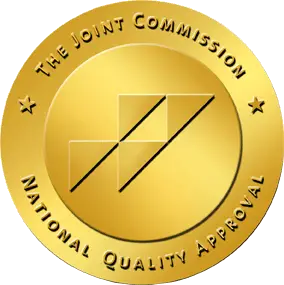When discussing cocaine addiction and treatment, it’s crucial to understand that crack and cocaine are actually two different forms of the same drug. While they share the same active ingredient, their differences in preparation, use, effects, and legal consequences have created significant disparities in how they’re perceived and treated by both society and the justice system.
What Is Cocaine?
Cocaine is a powerful stimulant drug derived from the coca plant, which grows primarily in South America. In its pure form, cocaine appears as a white, crystalline powder that is water-soluble and can be snorted, injected, or rubbed on the gums. This form is often called powder cocaine or simply “coke.”
The drug works by blocking dopamine reuptake in the brain’s reward system, creating intense feelings of euphoria, increased energy, and heightened alertness. However, these effects are short-lived, typically lasting 15-30 minutes when snorted, leading users to take repeated doses to maintain the high.
What Is Crack Cocaine?
Crack cocaine is chemically identical to powder cocaine but has been processed into a different form. It’s created by mixing powder cocaine with baking soda and water, then heating the mixture until it forms solid “rocks” or “crystals.” This process removes the hydrochloride salt from cocaine, making it smokable.
This Season, Give Yourself the Gift of a Fresh Start.
Whether you are struggling with addiction, mental health or both, our expert team is here to guide you every step of the way. Don’t wait— reach out today to take the first step toward taking control of your life.
Crack gets its name from the crackling sound it makes when heated and smoked. Unlike powder cocaine, crack is not water-soluble, which means it cannot be dissolved and injected. Instead, it’s typically smoked using pipes, which allows the drug to reach the brain within seconds.
Key Differences Between Cocaine and Crack
Method of Use and Onset
The primary difference lies in how these substances are consumed and how quickly they affect the user. Powder cocaine is typically snorted through the nose, though it can also be injected when dissolved in water. When snorted, cocaine takes several minutes to reach peak effects because it must be absorbed through nasal tissues and enter the bloodstream.
Crack cocaine is almost exclusively smoked, allowing it to enter the lungs and bloodstream immediately. This rapid delivery system means crack users feel effects within seconds of inhalation, creating an almost instantaneous high that many describe as more intense than powder cocaine.
Duration and Intensity of Effects
While both forms produce similar effects, the timeline differs significantly. Powder cocaine creates a high that typically lasts 15-30 minutes when snorted, with effects building gradually and declining slowly. Users often describe this as a more sustained experience.
Crack cocaine produces an intense but extremely brief high, usually lasting only 5-10 minutes. The rapid onset and quick decline create a pattern that encourages frequent redosing, as users attempt to maintain or recapture the initial euphoria. This cycle of intense highs followed by rapid crashes contributes to crack’s highly addictive nature.
Physical Appearance and Preparation
Powder cocaine appears as a fine, white crystalline powder that resembles talcum powder or flour. Street cocaine is rarely pure and is often mixed with other white substances like cornstarch, baking soda, or talc to increase profit margins for dealers.
Crack appears as small, off-white or yellowish rocks or crystals. The size can vary from tiny pebbles to larger chunks, and the color may change depending on the substances used in processing. The rock-like appearance makes crack easily recognizable and portion-controlled for street sales.
Cost and Accessibility
One of the most significant social differences between these substances is cost and accessibility. Powder cocaine is generally more expensive, often selling for $80-120 per gram in most markets. This higher cost historically made it more associated with affluent users.
Crack cocaine can be sold in much smaller quantities, with individual rocks sometimes costing as little as $5-20. This lower entry price made crack more accessible to economically disadvantaged communities, contributing to the devastating crack epidemic that peaked in the 1980s and 1990s.
The Chemical and Pharmacological Reality
Despite their different forms and methods of use, crack and powder cocaine are pharmacologically identical. Both contain the same active ingredient: cocaine. The main chemical difference is that crack has had the hydrochloride salt removed, making it smokable rather than water-soluble.
Brain Effects
Both substances work by blocking dopamine transporters in the brain’s reward pathways. This blockade causes dopamine to accumulate in synapses, creating the euphoric effects associated with cocaine use. The intensity and duration of these effects depend primarily on how quickly the drug reaches the brain, not on fundamental differences in the substances themselves.
Addiction Potential
While crack is often described as more addictive than powder cocaine, this perception stems largely from its method of use rather than inherent chemical differences. Smoking any drug typically creates higher addiction potential because it delivers substances to the brain more rapidly. However, both forms of cocaine carry significant addiction risk and can lead to severe dependence problems.
Legal Disparities and Social Impact
Perhaps no aspect of the crack versus cocaine distinction has been more controversial than the legal system’s treatment of these substances. For decades, federal sentencing guidelines imposed much harsher penalties for crack-related offenses compared to powder cocaine crimes.
Historical Sentencing Disparities
The Anti-Drug Abuse Act of 1986 established a 100:1 sentencing disparity, meaning that someone caught with 5 grams of crack received the same mandatory minimum sentence as someone with 500 grams of powder cocaine. This meant crack offenses carried sentences 100 times harsher than equivalent powder cocaine offenses.
The Fair Sentencing Act
In 2010, the Fair Sentencing Act reduced this disparity from 100:1 to 18:1, acknowledging that the extreme difference was neither scientifically justified nor equitably applied. However, significant disparities remain in the justice system’s treatment of these chemically identical substances.
Community Impact
These legal disparities disproportionately affected African American and Latino communities, where crack use was more prevalent, while powder cocaine charges more often affected white defendants. This created a system where identical drugs received vastly different treatment based primarily on the user’s method of consumption and, by extension, socioeconomic status.
Health Risks and Medical Consequences
Both forms of cocaine carry serious health risks, though the specific dangers may vary based on method of use and frequency of consumption.
Immediate Health Risks
Powder cocaine users face risks associated with snorting, including nasal damage, sinus problems, and potential bloodborne disease transmission if sharing straws or other implements. When injected, powder cocaine carries additional risks including collapsed veins, abscesses, and hepatitis or HIV transmission through shared needles.
Crack users face unique respiratory risks from smoking, including lung damage, respiratory infections, and “crack lung,” a condition that can cause severe breathing problems. The high-temperature smoke can also cause burns to the mouth, throat, and lungs.
Long-term Health Consequences
Both substances can cause severe cardiovascular problems, including heart attacks, irregular heartbeat, and stroke. Neurological damage is also common, with users experiencing seizures, headaches, and cognitive impairment. The rapid cycling of intense highs and crashes associated with crack use may accelerate some of these long-term consequences.
Overdose Risk
Cocaine overdose can occur with both forms of the drug, but crack’s rapid onset and short duration may increase overdose risk by encouraging frequent redosing. Users may take multiple doses in quick succession, leading to dangerous accumulation of the drug in their system.
Addiction Patterns and Treatment Considerations
Understanding the different patterns of addiction associated with crack and powder cocaine helps inform treatment approaches and recovery strategies.
Addiction Development
Crack addiction often develops more rapidly due to the intense reinforcement cycle created by its quick onset and brief duration. Users may find themselves smoking crack repeatedly in short sessions, sometimes called “binge” or “run” patterns, where they use continuously for hours or days.
Powder cocaine addiction may develop more gradually, with users initially using the drug socially or recreationally before progressing to more frequent and problematic use. However, both substances can lead to severe addiction that significantly impacts all areas of life.
Withdrawal and Recovery
Withdrawal symptoms are similar for both substances and typically include depression, fatigue, increased appetite, sleep disturbances, and intense cravings. However, crack users may experience more severe psychological symptoms due to the intense cycling of highs and crashes they’ve become accustomed to.
Treatment Approaches at The Recovery Village Palmer Lake
Effective cocaine addiction treatment addresses the underlying addiction regardless of whether someone primarily used crack or powder cocaine. Our comprehensive approach recognizes that both forms of the drug create similar neurochemical changes and require similar therapeutic interventions.
Medical Detoxification
While cocaine withdrawal is primarily psychological rather than physically dangerous, medical detox provides important support during the initial recovery period. Our medical team monitors patients for complications like depression, anxiety, and severe cravings while providing comfort medications to ease withdrawal symptoms.
Comprehensive Treatment Programs
Our inpatient rehab programs address cocaine addiction through evidence-based therapies including cognitive-behavioral therapy, motivational interviewing, and contingency management. These approaches help patients understand their addiction patterns, develop healthy coping strategies, and build motivation for long-term recovery.
Dual Diagnosis Treatment
Many individuals struggling with cocaine addiction also have co-occurring mental health conditions like depression, anxiety, or trauma-related disorders. Our integrated treatment approach addresses both the addiction and underlying mental health issues simultaneously, improving overall treatment outcomes.
Family and Social Support
Cocaine addiction affects entire families and social networks. Our family therapy programs help repair relationships damaged by addiction while educating loved ones about the recovery process. We also connect patients with peer support groups and community resources that provide ongoing encouragement and accountability.
The Importance of Evidence-Based Treatment
Regardless of whether someone has primarily used crack or powder cocaine, recovery requires comprehensive, evidence-based treatment that addresses all aspects of addiction. Neither form of cocaine is “easier” to recover from, and both require serious commitment to treatment and ongoing recovery support.
Breaking the Cycle
The rapid reinforcement cycle associated with cocaine use, particularly crack, creates strong psychological associations and cravings that must be addressed through therapy and behavioral interventions. Successful treatment helps patients identify triggers, develop healthy coping mechanisms, and build a lifestyle that supports long-term sobriety.
Addressing Underlying Issues
Many people turn to cocaine as a way to cope with underlying problems like trauma, mental illness, or social stressors. Effective treatment must identify and address these root causes to prevent relapse and support lasting recovery.
Insurance Coverage and Treatment Access
The stigma historically associated with crack use has sometimes created barriers to treatment access, but insurance coverage for addiction treatment applies equally regardless of which form of cocaine someone has used. Our admissions team works with patients to verify benefits and ensure access to needed care.
Overcoming Stigma
At The Recovery Village Palmer Lake, we treat all patients with dignity and respect, recognizing that addiction is a medical condition that can affect anyone regardless of their background or the specific substances they’ve used. Our compassionate approach focuses on healing and recovery rather than judgment.
Prevention and Education
Understanding the realities of cocaine in both its forms is crucial for prevention efforts and reducing harm in communities affected by cocaine addiction.
Dispelling Myths
Education efforts must address common misconceptions about crack and powder cocaine, emphasizing that they are the same drug in different forms rather than fundamentally different substances. This understanding can help reduce stigma and ensure that all individuals struggling with cocaine addiction receive appropriate treatment.
Community Support
Effective prevention requires community-wide efforts that address the social and economic factors that contribute to drug abuse. This includes improving access to education, employment opportunities, mental health services, and addiction treatment.
Looking Forward: Hope and Recovery
While cocaine addiction in any form presents serious challenges, recovery is absolutely possible with proper treatment and support. Thousands of people have successfully overcome cocaine addiction and built fulfilling lives in recovery.
Success Stories
At The Recovery Village Palmer Lake, we’ve seen patients recover from severe cocaine addiction involving both crack and powder cocaine. Recovery stories demonstrate that with commitment to treatment, strong support systems, and evidence-based care, people can overcome even severe addiction and reclaim their lives.
Building a Better Future
Recovery from cocaine addiction opens the door to rebuilding relationships, pursuing education and career goals, improving physical and mental health, and contributing positively to family and community. The journey may be challenging, but the rewards of recovery make the effort worthwhile.
Taking the Next Step
If you or someone you love is struggling with cocaine addiction, whether crack or powder cocaine, professional help is available. The Recovery Village Palmer Lake provides comprehensive, compassionate care designed to address all aspects of cocaine addiction and support long-term recovery.
Our treatment programs recognize that every individual’s journey is unique, and we tailor our approach to meet each patient’s specific needs and circumstances. From initial assessment through aftercare planning, our experienced team provides the support, tools, and resources needed for successful recovery.
Don’t let stigma or misconceptions about different forms of cocaine prevent you from seeking help. Addiction is a medical condition that responds to proper treatment, and recovery is possible regardless of which substances have been used or for how long.
Contact us today to learn more about our treatment programs and take the first step toward a healthier, drug-free future. Your life has value, and with the right support, recovery is within reach.








